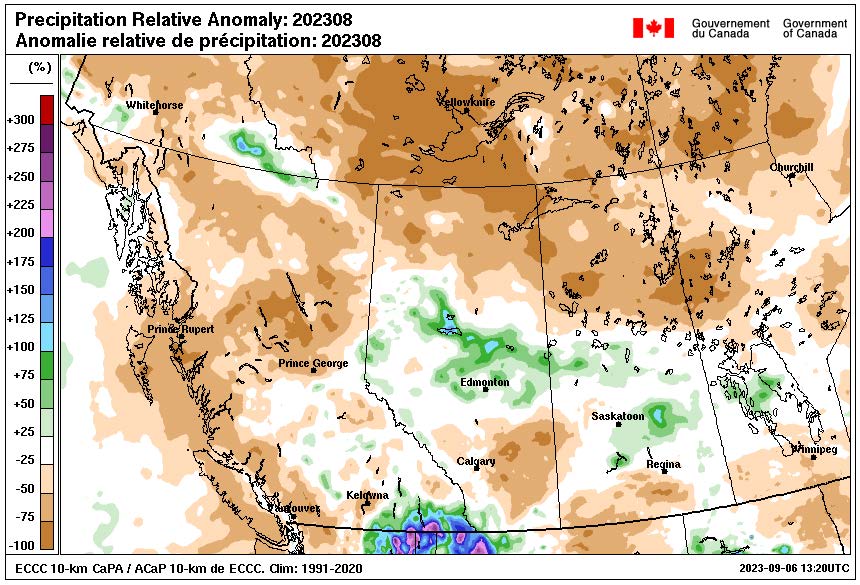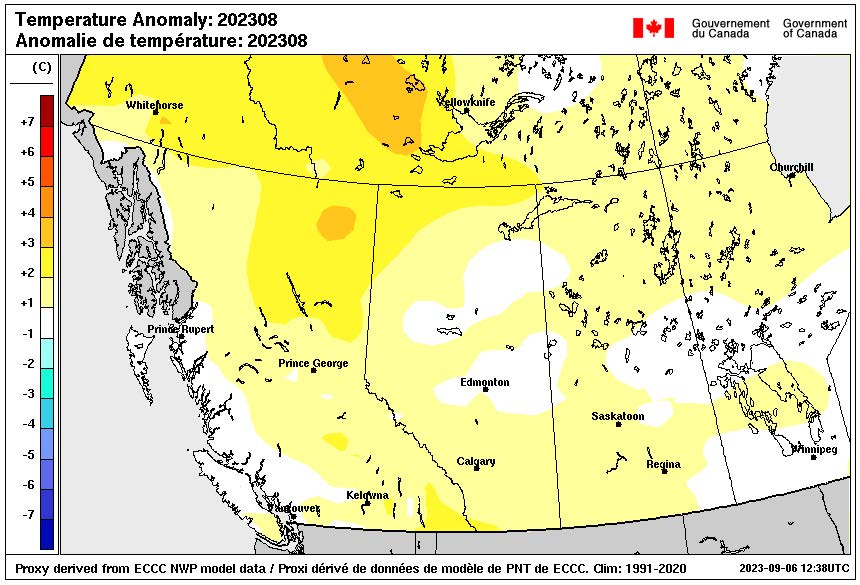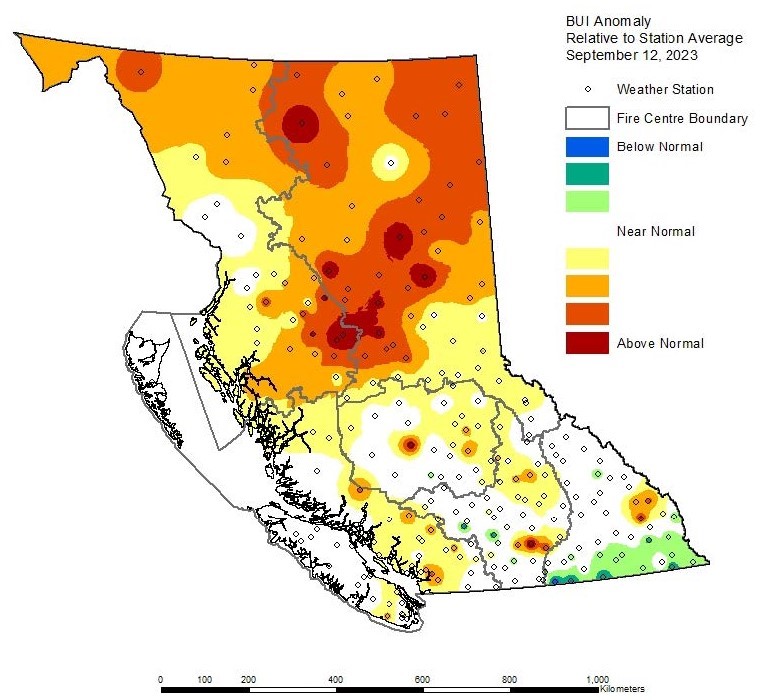Recent conditions and fire activity
Throughout August, warm and dry conditions persisted for much of the province, intensifying ongoing drought impacts on the wildfire season. A series of weather systems ignited new lightning-caused wildfires and led to substantial growth and increased fire behaviour on existing wildfires due to high temperatures and strong winds.


Although fire activity has steadied in comparison to weeks prior, drought values persist, and hundreds of wildfires are actively burning across the province. Conditions remain particularly challenging in the northeast, where recent wind events have led to some wildfires spreading 10 to 40 kilometres in one day.
As illustrated by the oranges and reds on the adjacent map, Build Up Index (BUI) values are anomalously high for this time of year throughout the northern half of B.C.
BUI represents the total amount of fuel readily available to burn. It combines the Duff Moisture Code (DMC) and the Drought Code (DC), thus taking into account the moisture content of medium-sized to large-sized woody material as well as the effects of seasonal drought on forest fuels.
Fall forecast
The 2023 fire season began several weeks early in the north and will remain active will into the fall. Guidance from Environment and Climate Change Canada (ECCC) indicates a high probability of above-normal fall temperatures and ongoing drier-than-normal conditions persisting in southern B.C. There is no indication of sufficient rainfall to alleviate elevated drought conditions.

Fuels will remain critically dry through the fall with above seasonal temperatures and below normal precipitation. Some large wildfires are expected to remain active through the fall and winter with the potential of resurfacing next spring – a phenomenon known as a holdover fire.

Convective weather patterns and thunderstorms are typically most prominent in the summer months. This season, lightning has accounted for over 70% of total wildfire starts. Lightning-caused wildfires are less common in the fall; therefore, the rate of new starts is expected to further taper off through September. Although the lightning risk has declined, human-caused fires are a constant risk throughout the season. Human activity can easily ignite dry, cured vegetation, which can already be seen in the changing colour of grasses, shrubs and deciduous trees.
